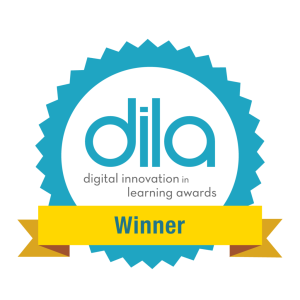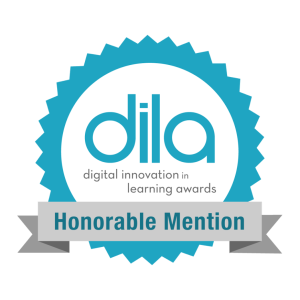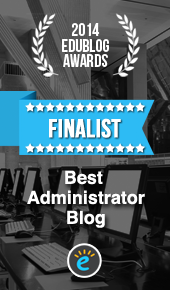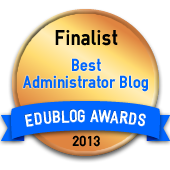Blog Archives
My Friends Don’t Know

What do dollhouses and cookbooks have to do with teaching & reaching kids? You might be surprised!
-
How will we know?
-
How will their friends know?
-
What is the world counting on us to discover about our students?
-
What’s YOUR talent or passion?
Fast-forward twenty years, and the kitchen in our house is definitely my domain. When my wife and I went to the open house for the home that we now own, I actually sat down in the kitchen for twenty minutes and pictured myself cooking and baking for our family. Culinary discovery has been such a passion of mine for so long it’s something I hope carries over to my own children, and something I need to let my friends and students know about also!
Buzzword or Lifeblood?

Image Credit: Jason Jenkins
I’ve heard some say that “student voice” is becoming a buzzword in education. I’m hopeful this is not true. We can’t let it be true.
Student voice should be the lifeblood of our schools. Our kids’ needs, aspirations, and voices should be predominant in education; from the boardroom to the classroom. (The same should be true of professional development!)
EdCampEC will be cranking up the volume and amplifying student voice on April 9th. Greenwood Elementary (MN) students will be teaching teachers through a hands-on and student-led MakerSpace challenge.
Recently, some of our 3rd graders participated in a BattleDome experience using 3D printed exo-skeletons. The exo-skeletons fit around Sphero robotic droids that teams navigated during the competition. Engineering and collaboration were interwoven throughout the experience, as students added different offensive and defensive capabilities to their exo-skeletons. Kids were “making” with a purpose and the entire experience was nothing short of spectacular.
You can read more about the experience HERE…OR you can make the trek to Eau Claire, Wisconsin on April 9th to hear directly from the students involved! They can tell you about their design process, and how different tools from our school’s Mobile MakerSpace fleet were used to unleash creativity and learning.
Student voice is alive and well! We couldn’t be prouder of our kids, and we look forward to seeing their leadership and communication skills shine at EdCampEC.
If you have questions before April 9th (or can’t make the trip) don’t hesitate to reach out to the teachers who organized the Sphero-Exo event.
The Rush

Image Credit: http://www.dumblittleman.com
There is no shortage of passion in education. Teachers work tirelessly to meet the needs of their students, often sacrificing family time and resources in the process. Their commitment to discover new tools and techniques to make a difference for kids is one of the best untold stories in education.
At the same time, external pressures and conflicting mandates have created some very challenging conditions for teachers. I’ve noticed that all of these factors have perpetuated a rush of sorts.
Notably absent in the rush is a deeper dialog about pedagogy. Educators rush to new ideas in pursuit of different ways to inspire students, or just the opposite. We may rush to repeat the same routines that worked well in previous year(s). Whether we are rushing to bring new opportunities to our students, or confronted by the lure of efficiency that the status quo offers; pedagogy needs to play a more prominent role in the rush.
- Before we rush to [insert educational trend here] we need to reflect upon the purpose.
- Before we rush to [insert past-practice here] we need to consider a more relevant and connected pedagogy.
Communicating precisely what a connected pedagogy is (and is not) becomes vitally important to ensuring we’re rushing to the right (and relevant) things for our students. The short video below is a humorous take on what happens when we say the same thing, but understand it differently than others. Pedagogy is an example of a word that many educators use, but we all understand it differently.
I’ve identified four tenets of a connected pedagogy that will empower educators to do the difficult work they’ve dedicated their lives to. The tenets take the ambiguity out of the term “pedagogy” and illuminate a path that will cultivate skills for today’s learners. The blog posts that I’ve linked to each tenet are basic conversation starters.
When we prioritize purpose and rush to a relevant & connected pedagogy the work becomes more significant.

Image Credit: http://www.brainyquote.com
The Pedagogy of Skydiving
I often hear people talk about the drastic changes needed in education to prepare students for their future. However, I tend to believe that the right people to do the job are already in our schools. To respond to the needs of the 21st century student we need subtle shifts in thinking and pedagogy. These subtle shifts will lead to transformational results.
Just. Like. Skydiving.
I had the opportunity to go indoor skydiving with a couple friends in Chicago recently. Our experience in the immense wind-tunnel was a pure adrenaline rush. Although the skydiving took place indoors the speed and force of the air blasting upwards was very real.
Indoor skydiving wind-tunnels are capable of blasting air that reaches speeds of 175+ mph. I found the mechanics of this high octane sport fascinating. The air speeds are so intense that super slight adjustments to body position can lead to jolting movements.
When I was in the standard neutral belly position (chin up and arms out) a subtle adjustment of my hands could have propelled me into a 360 degree rotation. This subtle shift in my wrists would have been indiscernible to the casual onlooker, but it could have had me resembling a human helicopter blade!
Understanding the impact of subtle shifts is critical in skydiving; it’s critical in education too.
The proper subtle shifts can lead to a transformative experience. Be sure to watch the two minute video of our indoor skydiving adventure that’s embedded above. (The end of the video contains raw footage of our highly trained instructors applying the principle of ‘subtle shifts’ that led to a jaw-dropping aerial acrobatic show.)
What subtle shifts do YOU think our students deserve?
Share your thoughts in the comments section. I started with a few subtle shifts in thinking that will serve our students well:
- How can I enhance the frequency and depth of collaboration in my classroom or school?
- In what ways can I give up more control so that students truly own their learning?
- How might we tap into the transformational power of technology to move beyond the prevailing belief that an interactive whiteboard is the pinnacle of technology integration.
- Am I teaching a lesson or facilitating a lasting learning experience for students?
Why Mindset Matters
It’s a funny thing. All a child really requires to change the world is permission…and maybe a sheet of paper. When we give kids permission to create we unleash a whole new world of possibilities. When we provide kids tools (paper, technology, sticks, whatever) and the conditions to create their inclination is to do just that. All it really takes is removing some of the compliance-based restraints we’ve systematized in our homes and schools.
Our family was recently enjoying lunch together on a local restaurant patio. It was undeniably HOT outside, but the precious sunshine that makes a cameo each summer in Minnesota was too much to pass up. There were also some regular gusts of wind that provided the perfect balance to the scorching sun.
After fielding a few initial complaints about the heat from our children we settled in and ordered some lemonade. It wasn’t more than five minutes later that one of our children began tearing apart her kids’ menu. My visceral reaction would normally include a reminder about restaurant etiquette, but I bit my tongue and proceeded to soak in the rays while enjoying my wife’s company.
It wasn’t long until my daughter produced the creative hat pictured above. I’m not sure if the hat actually provided any semblance of shade, but it did include a chin strap to guard against the sudden bursts of wind that occasionally greeted us over the course of our lunch outside. Needless to say, I was impressed.
Fast-forward to today, where I’m sitting inside listening to a summer rainstorm…
As I occasionally check the stream of tweets coming from the #ISTE15 and #NAESP15 hashtags, a part of me is really excited for what our kids can look forward to this coming school year.
When school resumes in the fall educators will bring back a mindset that has been impacted by a community of educators that will not rest until student creativity is celebrated. They will return to their schools armed with the understanding that the transformative power of technology is something that can actually bring people together.
I know that the educators who are connecting and spending time together at ISTE and NAESP will ultimately bring something more valuable than any device, tablet, or initiative back to their respective schools. “Best-practice” doesn’t start with a tool or tablet, and it’s certainly not a program. Our kids are counting on us to embrace a learner’s mindset. In doing so we may need to unlearn approaches we once held dear. We need to give our students permission to create, make, engineer, paint, invent, tinker, connect, collaborate, and grow.
Our kids are counting on us. This is precisely why mindset matters.
True Learner Empowerment
We recently had a couple remote controls from our educational drones drop to the ground resulting in broken joysticks. Accidents happen and we completely understand this, but thanks to our amazing staff and students this is not the end of the story.
An elementary student was empowered to help engineer a new joystick using our school’s 3D printer. She worked with Mr. Hinnenkamp to create a tiny joystick sleeve that fit over the broken drone remote controls using a design program called Tinkercad. Everything works as good as new now, and our students had the opportunity to experience authentic innovation and learner empowerment.
This is precisely why we feel it is critical to put students in the center of their learning (even if it means things get messy or broken every once in a while). Kids have the capacity to innovate, engineer, think critically, and solve a myriad of real problems; they don’t require worksheets to do so! All students deserve the opportunity to work with cutting-edge technology in a safe and supportive learning environment. If the first time students have the opportunity to innovate and invent using real-world tools is high school or college, then we will have failed them.
This is more than a story about drones or a 3D printer. I took the opportunity to speak with the student that helped repair her drone remote control. The pride she exuded when she explained to me how she had fixed something that was accidentally broken was unmistakable. There was a humble confidence that I had not seen before. As we finished chatting I asked her how this experience made her feel and her response literally choked me up…I nearly cried. Suffice it to say, the opportunity she was given to fix her drone remote meant the world to her. And THAT means the world to me.
Thank you, teachers. Thank you for truly empowering our students. I honestly LOVE how our entire team empowers students and supports our kids in learning skills they will need to thrive today and excel tomorrow.

















